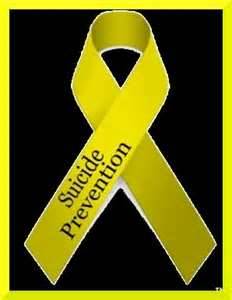38 Teen Suicide is Preventable
Based on Research by Robert H. Aseltine Jr, Ph.D. and Robert DeMartino, M.D. Psychology Science Minute written by American Psychological Association, adapted by Juanita N Baker, Ph.D.
Suicide is the third-leading cause of death for young people ages 15 to 24, and surpassed only by homicide and accidents, according to the U.S. Center for Disease Control and Prevention.
According to a 2004 report distributed by the National Institute of Mental Health, research shows that among the risk factors for suicide are depression and substance abuse. The risk for suicide frequently occurs in combination with external stressors that seem to overwhelm at-risk teens, such as disciplinary problems, interpersonal losses, family violence, sexual orientation confusion, physical and sexual abuse and being the victim of bullying.
Screening and educational programs for suicidal thoughts and depression that identify at-risk adolescents, such as Drs. Aseltine and DeMartino’s research, have proved helpful as suicide prevention efforts. Educating teens to get help reduces suicidal attempts and thus can save lives.
If you hear a teen talking about dying, using weapons or other types of self-harm, and saying things like “everyone would be better off without me,” take these depressed or suicidal statements seriously. Express caring and concern. Go with them to tell another respected adult, teacher, or their parents. Help them find and get mental health resources. Most schools have confidential guidance and counseling services.
Cited Research
American Psychological Association explains more, see: http://www.apa.org/research/action/suicide.aspx
Aseltine, R.H. & DeMartino, R. (2004). An Outcome Evaluation of the SOS Suicide Prevention Program. American Journal of Public Health, 94, 3, 446-451.
Center for Disease Control Suicide Fact Sheet
Gould, M., Greenberg, T., Velting, D., Shaffer, D. (2003). Youth suicide risk and preventive interventions: A review of the past 10 years. Journal of the American Academy of Child & Adolescent Psychiatry. 42(4):386-405.
Achilles, J., Gray, D., Moskos, M. (2004). Adolescent Suicide Myths in the United States. Crisis: The Journal of Crisis Intervention and Suicide Prevention. 25(4):176-182.
Beautrais, A. (2005). National strategies for the reduction and prevention of suicide. Crisis: The Journal of Crisis Intervention and Suicide Prevention.26(1);1-3
Resources
Berman, A., Jobes, D., & Silverman, M., (2006) Adolescent suicide: Assessment and intervention (2nd ed.) Washington, DC: American Psychological Association, 456 pp.
Mann JJ, Apter A, Bertolote J, et al. (2005). Suicide prevention strategies: a systematic review. Journal of the American Medical Association, 294;2064-74.
National Suicide Prevention Lifeline or 1-800-273-TALK
National Youth Violence Prevention Resource Center (NYVPRC) or call: (866) SAFEYOUTH
Suicide Awareness Voices of Education (SAVE) or call: (800) SUICIDE





